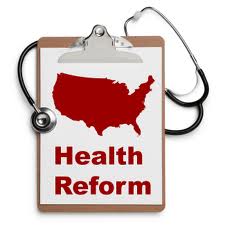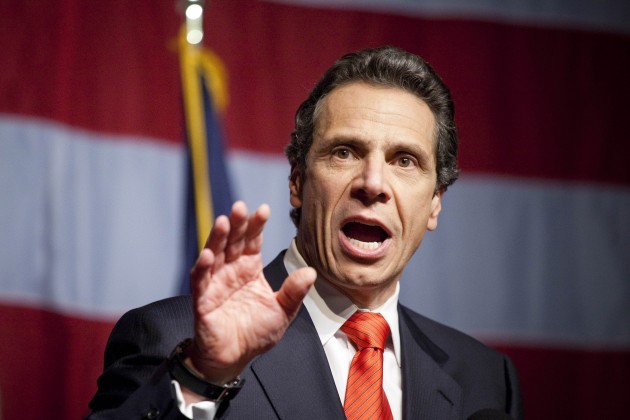 Have you ever had those annoying debt collectors call your house over and over and over again? They can be relentless calling at all times of the night leaving disparaging messages about a debt they are attempting to collect.
Have you ever had those annoying debt collectors call your house over and over and over again? They can be relentless calling at all times of the night leaving disparaging messages about a debt they are attempting to collect.
Now imagine for a just a minute being able to call up your local newspaper and convene a press conference. You would give details on the meeting you held amongst the members of your household discussing whether or not Mastercard should increase your credit limit in order to help you pay your bills. You would explain that your family came to a unanimous consensus that Mastercard in light of your situation should indeed increase your credit limits even though you and members of your household are spending more money on groceries, cable television, clothes, DVDs, and Xbox 360 video games than you are collectively earning through employment checks and other revenue streams. After all, you would challenge, the increased credit limit is imperative to you making good on your outstanding financial obligations.
Does this sound like a dream world or maybe a Saturday Night Live comedy sketch? To any family in the United States regardless of our differences and despite our diversity, it definitely would be. The most logical solution would be to tighten the collective family “belt”. You would realize very quickly the most important thing to do would be to cut spending. First, you might break out the family spending into needs versus wants.
Second, maybe prioritize the list of needs like electricity and gas while sacrificing the list of wants like cable TV and summer vacations.
Third, you would look for ways to spend less money on the important necessities like foregoing brand name groceries for the store brands. And lastly, forth you would focus on areas where money is being wasted, like turning off the air conditioner in the empty rooms.
Well, the United States of America under the Obama administration will default on its debt for the first time in its 235 year history if Democrats and Republicans do not come to an agreement by August 2, 2011. Technically, it has really only been 94 years since the first debt limit was put into place in 1917 during Woodrow Wilson’s 2nd term. The history of the debt ceiling was explained in a nonpartisan 2008 Congressional Research Service report stating, “The debt limit imposes a form of fiscal accountability, which compels Congress and the President to take visible action to allow further federal borrowing when the federal government spends more than it collects in revenues”.
So in actuality, the debt limit has been successful in its aim. Our national debt has finally become a serious conversation. It’s become so serious Fitch, S&P, and Moody’s have issued warnings to the United States in recent weeks about downgrading their credit rating. After all, our debt represents a whopping 98.6% of our GDP as of June 2011.
Bargaining Table
Democrats want a resolution that includes a tax increase for individuals that earn $200,000 a year or more and for families that earn $250,000 a year or more. This increase would match the tax rates under the Clinton administration. Additionally, they are reluctant to cut spending in any meaningful way to Medicare, Medicaid, or Social Security programs.
Conversely, Republicans have drawn a line in the sand with approving any tax increases and they refuse to negotiate without substantial cuts to the same exact social welfare programs Democrats refuse to touch. Many have characterized the Republican stance as cold-hearted and capitalistic with a focus on big business rather than regular Americans.
Republicans in response answer with facts about the severity of America’s financial problem.
The Debt Debacle
America owes approximately $14 Trillion dollars and counting. This equates to roughly $45,000 per American citizen including children and non-working Americans. Additionally, only 53% of all citizens actually paid federal income tax –down from 62% in years prior– last year.
So the amount of debt per tax payer is actually much higher. While American citizens are tightening their belts, the Obama Administration is spending about $120 billion more than it earns in revenues each month. There’s no need for a calculator to understand that statistic. And about 50% of this overspending is divided up between Medicare and Medicaid programs (23%), Social Security (20%), and the interest on our debt (6%).
The big question that arises next is who we owe this money to. The majority of the foreign debt is owed to China. Not only is this a country that undermines the American economy and our 9% unemployment rate with cheaper goods and outsourcing labor services, it’s a country with a starkly different view on human and civil rights than us. The atrocities in human rights violations in China were so acute, Secretary Hilary Clinton of the State Department issued an April 21, 2011 press release stating, “Discussions [with China] will focus on human rights developments, including the recent negative trend of forced disappearances, extralegal detentions, and arrests and convictions, as well as rule of law, freedom of religion, freedom of expression, labor rights, minority rights and other human rights issues of concern”.
Outside of being the biggest owner of our debt, would America work with a country with such vastly different values? Moreover, the United States Department of Treasury lists 14 countries and regions including the Ivory Coast, Cuba, Congo, Iran, Libya, North Korea, Sudan, Syria, and Zimbabwe that are currently in the midst of tough sanctions; many of which derived in part by human rights violations that can be closely compared to actions by China. Our debt crisis is increasing impacting our national moral compass.
The Big Elephant in the Room
Obama, a President who had promoted transparency as a stark difference between his immediate predecessor, has unfortunately negotiating debt ceiling deals behind closed doors. Inside his oval office instead of in front of the American people. However, despite these efforts, a resolution has not been finalized due to “the big elephant in the room.” That elephant more specifically has been the GOP (Grand Old Party).
Speaker Boehner on the heels of a Golf Summit with both the President and the Vice-President has held steadfast to any increase in tax rates being non-negotiable. House Majority Leader Eric Cantor has solidified his stance as well explaining any deal must not include any “net new revenues, period.”
Much of the strong tone from the Republican Party leadership can be attributed to a brand new class of conservatives that were elected in droves during the last mid-term election…Tea Party candidates.
Ron Johnson of Wisconsin, a tea party candidate that toppled the 18 year career politician, Russ Feingold, last fall has stated that the Obama Administration has been irresponsible in handling the debt crisis. He called the process “disgusting” since it has been behind closed doors and away from the American public. He has also called for a process that would (1) cut the federal budget, (2) cap spending, and (3) balance the budget with a constitutional amendment. Such an amendment is similar to what many State governments and governors have instituted.
Tim Scott of South Carolina, an African-American Tea Party freshman Congressman explained, “There is not a revenue problem in Washington D.C., there is a spending problem. Let’s talk about spending cuts that save America and our future.” He has also called for the impeachment of President Obama if the debt ceiling is raised without a vote from Congress.
Senator Schumer of New York had outlined a process by which the debt ceiling could potentially be raised without a single vote from Congress. Section 4 of the 14th Amendment states, “The validity of the public debt of the United States, authorized by law… shall not be questioned.” However, Congressman Scott invoking Section 8 of Article 1 outlines the powers of Congress explaining only “Congress shall have power to borrow money on the credit of the United States.”
At the end of the day, American still wants to know why Republicans are so hell-bent on preventing tax increases on top American earners. This appears to be the one issue that is stopping a debt ceiling resolution.
First, Republicans agree with statements Obama said in 2009. In a visit to the small town of Elkhart in Indiana, the President told a reporter, “You don’t raise taxes in a recession, which is why we haven’t and why we’ve instead cut taxes.”
Secondly, many small business owners chose to file taxes as individuals and families rather than a corporation. As a corporation they face a 35% corporate tax rate, thus the $200,000 limit impacts small business owners.
Thirdly, the National Federation of Independent Business (NFIB) released a survey explaining employers that employ over 60 million Americans would be impacted by a tax increase on higher earnings. Basically, 15% of all businesses in America earned $200,000 or more a year. While 15% sounds low, when you drill down into the numbers you realize more than 50% of the businesses with 20 to 249 employees earn more than $200,000 a year.
Businesses with that many employees represent over 39 million Americans; roughly 10% of the US population. Only 11% of firms with 1 to 9 employees earn more than $200,000 a year however those firms represent about 20 million Americans.
Lastly, the 60 million Americans that could be affected represent more than the current uninsured population and the unemployed population. Thus, an increase in tax rates could jeopardize any improvement in lowering both the uninsured rates and the unemployment rates. Businesses have stated in the face of a tax increase, they would be reluctant to hire or continue offering health insurance benefits.
Republicans believe private sector job growth is reliant on a thriving small business marketplace. That is why they are calling for a reduction in spending without an increase in tax rates on top earners in order to even consider a vote on an increased debt ceiling. They are looking to avoid a destabilized economy. On the heels of a historical tea party election win, they believe the American people are behind them and will continue to be Obama’s Big Elephant in the Room.
Originally Posted at Blackstarnews.com
1 Man 1 Mind
 When you add up the exit polling from all the battleground states Mitt Romney got roughly: 7% of the Black vote; 29% of the Hispanic vote; 40% of the Under-30 vote; and, 35% of the single female vote.
When you add up the exit polling from all the battleground states Mitt Romney got roughly: 7% of the Black vote; 29% of the Hispanic vote; 40% of the Under-30 vote; and, 35% of the single female vote.


















